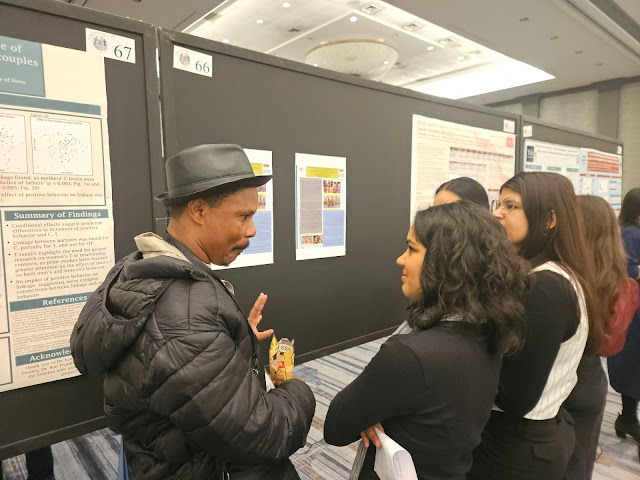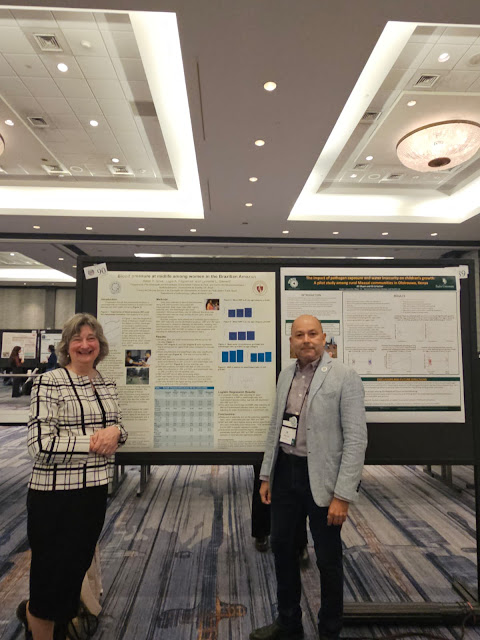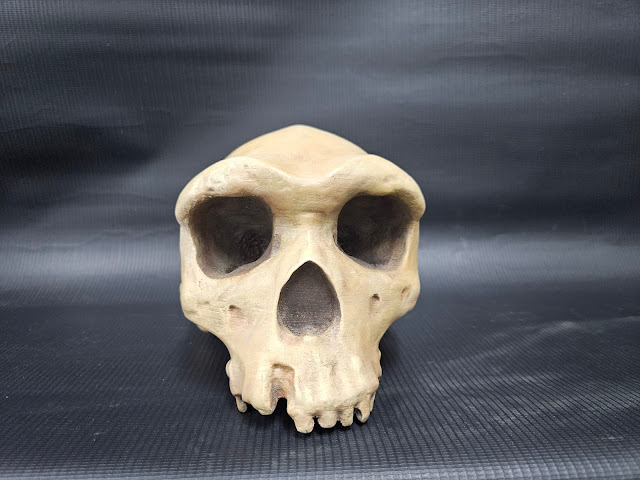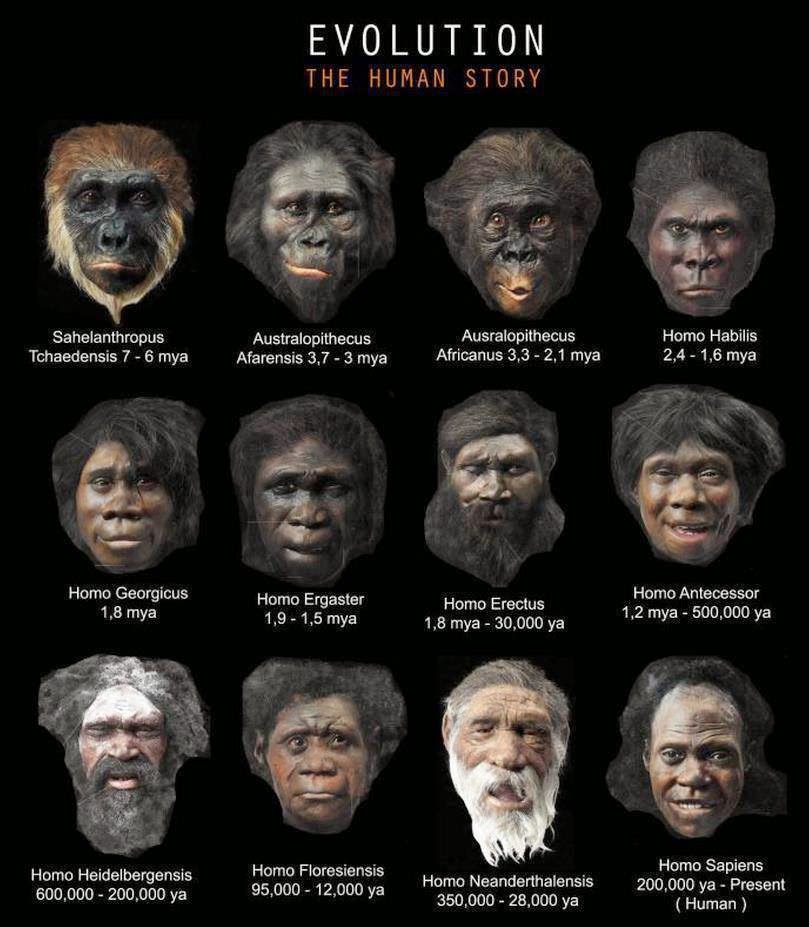UFPA, PPGA, LEBIOS e GEB/UEPA em Destaque no 50º Aniversário da HBA
No período de 12 a 15 de março, está em andamento na Cidade de Baltimore, Maryland, USA o 50º Congresso da Human Biology Association (HBA) (Human Biology Association - 2025 Human Biology Association Annual Meeting in Baltimore, MD). Este é o mais importante evento de Bioantropologia do hemisfério ocidental. O encontro reúne os principais pesquisadores e estudantes deste campo da antropologia para apresentar os resultados de suas pesquisas mais recentes, discutir colaborações e formas como a bioantropologia (também conhecida como Biologia Humana, nos EUA) pode contribuir para a proposição, construção e implementação de políticas públicas.
Em 2025 a Associação completa 50 anos e a UFPA, o PPGA, o Lebios e o GEB/UEPA contribuem para fazer essa história. A começar pelo desenho da logomarca comemorativa do evento, feita por Ruan Neres do Carmo, ex-aluno da UFPA e do LEBIOS. Além disso, este ano ao todo oito trabalhos com pesquisadores do Pará foram selecionados para apresentação no congresso.
A Mestre em Saúde Pública pelo PPGSCA/UFPA, Priscila Ester Lima da Silva, apresentou virtualmente na forma de pôster o trabalho “Challenges to pregnancy and postpartum care during the Covid-19 pandemic in a capital city in the Amazon, Brazil”, com coautoria dos docentes do PPGA, Hilton P. Silva, Coordenador do LEBIOS, e Pedro da Glória; da Mestre em Saúde, Ambiente e Sociedade na Amazônia pela UFPA, Roseane B. Tavares, do Grupo de Estudos em Bioantropologia da UEPA (GEB/UEPA), e da Profa. Dra. Barbara A. Piperata, da Ohio State University, EUA.
 |
| Priscila Silva apresentando seu trabalho na HBA. |
O doutorando em antropologia social do PPGA, Franckel Moreau, viajou aos EUA para apresentar o trabalho “Body and identity in the digital age: a bioanthropological analysis of aesthetic norms of young adults in Brazil”, pelo qual recebeu um International Travel Award, 2025.
 |
| Franckel Moreau apresentando seu trabalho na HBA. |
 |
| Franckel recebendo o International Travel Award das mãos do presidente da HBA Richard Bribrieskas. |
O Prof. Hilton, que também é docente do Centro de Estudos Avançados Multidisciplinares da Universidade de Brasília (CEAM/UnB), é ainda autor no trabalho “Blood pressure at midlife among women in the Brazilian Amazon”, em co-autoria com a docente da UEPA, egressa do PPGA/UFPA e uma das criadoras do GEB/UEPA, Lígia A. Filgueiras, e a Profa. Dra. Lynnette L. Sievert, da University of Massachusetts em Amherst, EUA, e um dos co-autores do trabalho “Biología Humana Latinoamericana para el siglo XXI: una oportunidad para imaginar sinergias”, realizado em parceria com colegas docentes latino-americanos de instituições do México, EUA, Argentina e Canada.
 |
| Profs. Hilton e Lynnette. |
Profa. Dra. Lígia A. Filgueiras, que é também co-lider do LEBIOS, é uma das co-autoras de mais dois trabalhos apresentados on-line, realizados em parceria com diversos pesquisadores e estudantes da UFRJ e da UEPA. Finalmente, a doutoranda em bioantropologia do PPGA, Ana Carolina da Silva Brito e a pesquisadora do LEBIOS e do GEB, Roseane B. T. Oliveira, também participaram de dois pôsteres juntamente com pesquisadores de outras instituições do Brasil e dos EUA.
Além de contribuir para a formação de mestres e doutores no campo da bioantropologia e da saúde pública, o LEBIOS e o PPGA têm levado as pesquisas realizadas na e sobre a Amazônia para um amplo público internacional, contribuindo para a disseminação da bioantropologia no Brasil e a internacionalização da UFPA.
A seguir você pode conferir os resumos dos trabalhos apresentados no 50th Meeting of the Human Biology Association. O programa completo do evento pode ser acessado através do link: https://onlinelibrary.wiley.com/toc/15206300/2025/37/S1
Challenges to pregnancy and postpartum care during the Covid-19 pandemic in a capital city in the Amazon, Brazil
Priscila Ester Lima da Silva, Hilton P. Silva, Roseane B.T. Oliveira, Pedro da Glória, and Barbara A. Piperata
Abstract: This is a qualitative research using a bioanthropological approach, involving mother-baby dyads of high and low socioeconomic status (SES) from the city of Belém, in the Brazilian Amazon, with the objective of understanding the challenges brought by the Covid-19 pandemic in the self-care of women during pregnancy and puerperium, the impacts on parental care and which strategies were most commonly used by women during this special period. Different socioeconomic strata were analyzed to identify the self-care conditions considered necessary by women during pregnancy, as well as care for the baby during the puerperal period in the midst of a pandemic. A protocol was developed considering the international epidemiological recommendations, using face-to-face interviews, when possible, and online meetings, with mothers of babies in the first two months of life. Data collection took place between July 2021 and March 2022. Twenty-one women participated in the research. In general, mothers encountered difficulties in social interaction with family, assistance from family members, self-care, reduced income, and lack of prenatal consultations during the pandemic, but they found some ways to alleviate the difficulties by using social networks such as E-mail, WhatsApp, Instagram, and YouTube for consultations, information, and also to generate income. The study provided an overview of how the pandemic affected mothers and babies from different SES in a major Amazon city and how they reacted. The findings may contribute to the planning of public policies aimed at maternal and child care during periods of prolonged crises, such as epidemics, pandemics and environmental disasters.
Body and identity in the digital age: a bioanthropological analysis of aesthetic norms of young adults in Brazil
F Moreau
Abstract: This research aims to examine the impact of digital technologies on the perception and body identity of young adults, focusing on platforms such as TikTok, Instagram and Facebook. Adopting a bioanthropological approach, which combines biological and cultural dimensions, together with a netnographic methodology, the analysis explores how these social networks shape aesthetic norms and influence body perceptions representations: young adults, confronted with retouched images and idealized content, often feel pressure to reconstruct their bodies, leading them to undergo surgical procedures, such as body modification surgeries, breast augmentation, facial harmonization. Preliminary observations show that this continuous exposure to idealized beauty standards contributes to a redefinition of body identity, exacerbating insecurities, emotional stress, and social comparisons. Faced with these challenges, young people develop coping mechanisms, such as involvement in movements of body positivity, that promote self-acceptance despite the aesthetic pressures. Through a literature review and collection and critical analysis of data, this poster aims to provide an understanding of contemporary issues related to body image. By integrating historical and biocultural perspectives, this research highlights the importance of an interdisciplinary approach to understand modern challenges related to body perception and identity, while also shedding light on the sociocultural implications for the psychological well-being of young adults in the digital age.
Blood pressure at midlife among women in the Brazilian Amazon
HP Silva, LA Filgueiras and LL Sievert
Abstract: As women progress through the menopause transition, there is increasing risk for cardiovascular disease and other health concerns. Here, we have an opportunity to examine blood pressure (BP) among women aged 35 to 60 drawn from 6 rural communities (n=125) in the Brazilian Amazon. Data were collected with face-to-face interviews and included anthropometric and BP measurements. Age categories roughly correspond to pre-, peri-, and post-menopausal categories. Among women aged 50 to 60 years, mean systolic BP was significantly higher (138.1 mmhg, s.d. 24.1; n=39) compared to women aged 45 to 49 (125.5 mmhg, s.d. 22.9, n=34) and 35 to 44 years (116.2 mmhg, s.d. 16.5; n=52) (p<0.001). The same pattern was true for diastolic BP, which was highest among women aged 50 to 60 years (86.6 mmhg, s.d.16.2) compared to women aged 45 to 49 (82.0 mmhg, s.d. 17.5) and 35 to 44 years (77.8 mmhg, s.d. 12.8) (p=0.026). Body mass index (BMI, kg/m2), waist circumference, and waist/height ratio (but not waist/hip ratio) increased significantly with age so that women aged 50 to 60 years had the highest values. Systolic and diastolic BP measurements were significantly positively correlated with BMI, waist circumference, and waist/height ratio (but not waist/hip ratio). After adjusting for smoking, quilombola/caboclo status, and adiposity, age continued to be positively associated with systolic BP, but not consistently associated with diastolic BP. The increase in BP among women aged 50 and older suggests post-menopausal status may play a role, as in other rural and urban populations.
Biología Humana Latinoamericana para el siglo XXI: una oportunidad para imaginar sinergias
Alejandra Núñez-de la Mora, Hugo Azcorra Pérez, Diana Bueno Gutierrez, Isaura Cruz, Federico Dickinson, Daniela Hortensia Guerra Medrano, Rolando González-José, Aimé López González, Paula A Monguí, Pablo Nepomnaschy, Paloma Contreras, Sofía Irene Olmedo, Nerli Paredes Ruvalcaba, Hilton P. Silva, Ana Gabriela Perroni Marañón, Anahí Ruderman, Alanna Rudzik, Martha Alicia Ruiz Velasco Muñoz, Andrea Silva Caballero, Claudia Valeggia
Resumen: La brecha entre el Sur y el Norte Global en la producción, circulación, comunicación y acceso al conocimiento científico ha sido ampliamente documentada. Dichas desigualdades se manifiestan en el volumen, alcance, diversidad e impacto de iniciativas y resultados de investigación, la inversión en la generación de sistemas de investigación, la oferta de programas académicos y de oportunidades laborales, la migración de profesionales altamente capacitados, las barreras de lenguaje y el anglocentrismo de la ciencia contemporánea, entre otros. Las causas de dichas disparidades son múltiples y complejas, pero en el caso de Latinoamérica, el impacto que los altibajos políticos, las ideologías y democracias cambiantes, y la resultante inestabilidad económica de años recientes han tenido en la política científica de la mayoría de los países de la región, ha planteado desafíos importantes para las instituciones y comunidades científicas y educativas. En este espacio, proponemos reflexionar sobre los retos que implica el construir y mantener las capacidades de docencia e investigación para una investigación en Biología Humana de largo aliento en condiciones de incertidumbre e inestabilidad, e identificar oportunidades e imaginar estrategias adaptativas, y colaborativas que posibiliten una investigación pertinente, relevante y transformadora que permita vislumbrar un futuro promisorio para la Biología Humana pensada desde, con y para el Sur.
Health Condition in different Phenotypes of Systemic Arterial Hypertension in young people from Primary Care of the Brazilian Unified Health System
Randerson José de Araujo Sousa, Gabriel Parente Bernardes, Rayan Moura Patrik Naim, Victor Fernando Xavier Laurindo da Silva, Luiz Emanuel Batista Lima, Igor Dutra Tschope, Katsuki Coelho Yano, Anthony Marcos Bryam Oliveira Pereira, Ligia Amaral Filgueiras, Elizabeth Silaid Muxfeldt
Introduction: Systemic arterial hypertension (SAH) is a chronic, multifactorial disease characterized by persistent elevation of blood pressure. It is considered one of the main cardiovascular risk factors, which worsens when there is no early and adequate diagnosis associated with an adverse clinical profile. Objective: To assess the health status of young adults with SAH phenotypes in primary care. Method: Population-based, multicenter (LapARC - Rio de Janeiro study arm), cross-sectional study. Our center is located in the municipality of Santarém, Pará, Brazil. Young adults (20 to 50 years old) were assessed in relation to their cardiovascular risk profile, sociodemographic characteristics, anthropometry and electrical bioimpedance. Office blood pressure (OBP) was measured and 7-day Home Blood Pressure Monitoring (HBPM) was carried out. Results: 182 people were assessed, 21.4% were men, the average age was 39.4 ± 7.9 and more than half of the population had abdominal obesity (58.8%), a sedentary lifestyle (56%) and dyslipidemia (76.9%). Among those with white coat hypertension, increased abdominal circumference (83.3%) and metabolic syndrome (66.7%) were associated. Among those with sustained hypertension, in addition to metabolic syndrome (65.2%), increased neck circumference (21.7%) was associated, as well as systolic and diastolic blood pressure levels, which were statistically high. Furthermore, metabolic syndrome demonstrated an association with both OBP (Odds Ratio - OR=5.84) and HBPM (OR=3.60). Conclusion: The cardiometabolic profile is unfavorable and metabolic syndrome was the factor that was independently associated with lack of office and home blood pressure control.
Screening for Obstructive Sleep Apnea and the cardiovascular profile of young people from Primary Care in the Brazilian Amazon
Randerson José de Araujo Sousa, Gabriel Parente Bernardes, Rayan Moura Patrik Naim, Bruno Antônio Gomes Silva, Clara Sofia da Silva Oliveira, Danna Carvalho Veiga, Emilly Pinheiro da Cruz, Ligia Amaral Filgueiras, Elizabeth Silaid Muxfeldt
Introduction: Obstructive Sleep Apnea (OSA) is an underdiagnosed medical condition with an increasing prevalence due to rising obesity rates and improved diagnostic tools, and is recognized as an independent risk factor for cardiac and metabolic morbidities. Objective: To screen for OSA risk and cardiometabolic profile in primary health care. Method: Population-based, multicenter (LapARC - Rio de Janeiro study arm), cross-sectional study, Our center is located in the municipality of Santarém, Pará, Brazil. Young adults (20 to 50 years old) were assessed in relation to their cardiovascular risk profile, sociodemographic characteristics, bioimpedance and anthropometry. OSA was screened using the Stop-Bang Questionnaire (QSB) and the Epworth Sleepiness Scale (ESS), with QSB scores ≥ 3 and ESS scores ≥ 10 identifying high-risk patients (HR). Office blood pressure was measured and Home Blood Pressure Monitoring was carried out. Results: The study assessed 267 individuals, in which 87 (32.6%) were identified as having high risk for OSA by the QSB questionnaire, 98 (36.7%) by the ESS and 43 (16.1%) by both scales, with OSA being more prevalent among men (32.8%), in older, obese, with increased neck circumference, sedentary, dyslipidemic, diabetic and hypertensive individuals. Conclusion: the population showed classic and modifiable cardiovascular risk characteristics, which probably impacted the high prevalence of high risk for OSA and this suggests that, although young, this population is not as healthy as is doubtfully idealized.
Ecological immunity and breast milk immunological profiles of two populations of mothers in Belém, Brazil
SR Fannin, BA Piperata, RE Kopec, ACB de Azevedo, CS do Nascimento, RBT Oliveira, CA da Paz, JMF Pereira, VCT da Silva.
Breast milk is equipped with a host of immunological factors that play a critical role in developing the naïve infant immune system during the first years of life. Immune cells respond to the specific disease ecology that an individual is exposed to, which ultimately shapes variation in human milk immunity. While differences in milk immunity have been studied between rural and urban populations, few studies have looked at the potential for breast milk variation among populations with distinct local ecologies in the same urban context. This study aims to understand how local ecological contexts shape breast milk immunology among women living in the urban Amazonian city of Belém. Using socioeconomic status (SES) to infer the degree of pathogenicity in the lived environment, we performed ELISA assays to measure the concentrations of IgA, IgG, IgM, and lactoferrin in breast milk samples at ~4 weeks of maturity of 60 women, 23 of whom are classified as high SES and 37 as low SES. Among high SES women, concentrations of IgA, IgG, IgM, and lactoferrin were 335 ± 129 mg/L, 10.4 ± 5.19 mg/L, 4.72 ± 2.98 mg/L, and 4.11 ± 1.36 g/L, respectively. Among low SES women, concentrations measured 274 ± 278 mg/L, 8.57 ± 5.02 mg/L, 10.4 ± 8.04 mg/L, and 4.22 ± 1.46 g/L. Overall, there were no significant differences detected between the two groups except in mean IgM concentrations. Further research is required to understand if differences in local ecologies in Belém alter the immunological profiles of breastfeeding mothers.
Into the mouths of babes: complementary feeding practices and dietary diversity among a cohort of infants living in the urban Brazilian Amazon
Barbara Ann Piperata, Talita Cestonaro, Fannin Stephanie, Ana Carolina da Silva Brito, Christian Hoffmann
Despite government efforts to improve breastfeeding and complementary feeding, northern Brazil posts the poorest adherence to infant feeding guidelines and highest rate of infant growth faltering. To better understand complementary feeding practices in the region, we collected data on breastfeeding and dietary intake (24- hr dietary recall) from a longitudinal cohort of n=168 infants at 1- month, 3- months, 9- months, and 15- months living in high- and low- socio- economic-status households (HSES, LSES) in Belém. We complemented these data with interviews with n=30 mothers regarding infant feeding decisions. We used the FAO definitions for exclusive/mixed breastfeeding and followed their protocol for calculating minimum dietary diversity (MDD). Breastfeeding patterns did not differ between HSES and LSES infants at 1, 3 and 9-months. However, by 15- months, LSES infants were more likely to be breastfed (X2=4.04; p=0.04). At 3- months, both HSES and LSES infants received other foods, mainly cereals and cow's milk, and this was more frequent among LSES infants. At 9-months we documented cereals/roots/tubers, dairy, flesh foods, and Vit-A rich fruits/vegetables in infants’ diets and found no differences in MDD between the HSES and LSES groups (Mann- Whitney=2008; p=0.55). By 15- months infants were consuming foods from the cereals/roots/tubers, dairy, flesh foods, Vit-A rich fruits/vegetables, and legumes/nuts/seeds categories, and MDD was higher among HSES infants (Mann- Whitney=2180; p=0.04). We also found that LSES infants were more exposed to sugar and other ultra- processed foods. A review of the food items consumed, and thematic analysis of the interview transcripts indicate that an understanding of the biocultural context is needed to improve infant outcomes.





Comentários
Postar um comentário